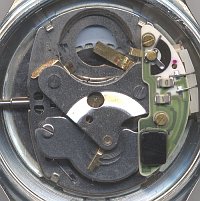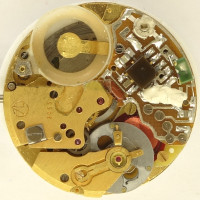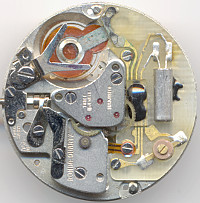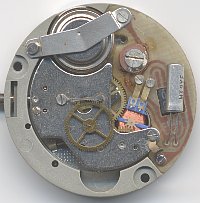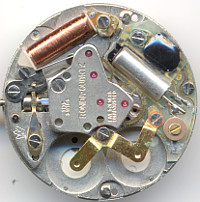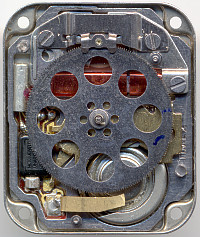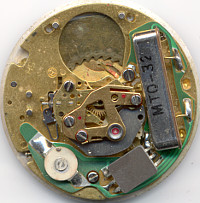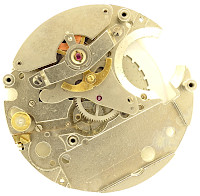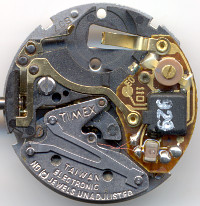The 1970s were marked by the transition from conventional mechanical movements to quartz-controlled works.
Within 10 years, the relation and relevance of the two types of work completely reversed the issue: in 1970, wristwatches with quartz movements were the absolute, almost priceless exotics and mechanical watches at the height of their development, so mechanical works, if they were even produced, were over The 70s discontinued models and on most wrists you could see the then ultra-modern quartz watches.
However, the development towards the quartz watch, as we know it today, was not linear. There were many experiments, many different approaches, but all with the same goal, the late 1960s still much too expensive and technically far from matured quartz watch a mass audience to access, both in terms of price, and in terms of reliability.
For a while, digital displays, first LED, then LCD, a competition with analog display forms, but ultimately this fight was decided in the 1980s in favor of conventional, analogue display, thanks to resourceful engineers at some point more than just the time but also provided chronograph and alarm functions.
Although the movement archive has dedicated itself to mechanical movements, the developments from the 70s to the mass quartz clock, which are partly exciting, partly quirky, but also really groundbreaking, should not be forgotten. A selection of works from this period is presented here:
Elektromechanical quartz movements
Electro-mechanical quartz movements are a special form: There is no motor here, but just as with “normal” electromechanical plants (which exist since the 1960s), a balance is brought to vibrate, which then drives the wheels to the time display.
The peculiarity of this technology is that the quartz control has only an influence on the balance oscillations and can only correct their deviations to a limited degree. Even if the accuracy of these movements is higher than in mechanical movements, and also higher than in electromechanical movements, it does not reach native quartz movements.
By far the largest manufacturer of these types of work was Timex, which produced several versions of this quartz movement of the first generation between 1972 and 1980. Further works were, however, in much lower numbers, by Golay (FB 7723 and FB 7743), as well as by Luch (Luch 3055)
Quartz movement with round motor
Unlike quartz movements with an rectangled stepper motor, the drive unit consists of a round-shaped motor, which in the end only makes half a turn per step. It is almost a subspecies of a stepper motor, but since this type of movement was installed very rarely and disappeared very quickly, it deserves a separate category.
At the beginning of the seventies there were various manufacturers (for example Girard-Perregaux) with such motors, but very quickly equipped their subsequent factory generations with the usual rectangled stepping motors. In the late 1970s, round motors were in fact only used by one manufacturer, UMF Ruhla in their first generation of quartz movements.
Quartz movement with rectangled stepper motor
This type corresponds to what is still used today in analog quartz watches. Those who already built this type of movement could consider the development of a quartz movement successfully completed and had only to worry about cutting costs and increasing production numbers.
Quartz movement with switching lever / moving coil
In this type of movement, there is no stepper motor, but a spinning reel, which changes its attack once per second and thus continues the work for one second. Construction-wise it is similar to the “electric” movements of the past century.
In terms of structure, this design is quite complex, in order to supply the rotary coil with power two spirals are necessary. Due to the heavy balance with coil, it is pretty fragile and so it’s easy to understand, that these kind of movements were only produced for a very short time, before they were surpassed by stepper motor movements.
Probably the best known representative of this type of work is the Rolex 5035, the “Oyster Quartz” caliber, which was even produced until the early 2000s, of course also because it was completely different to the cheap stepper motor competitors.
Quartz movement with rocking bar lever
This type of movement is characterized by the fact that, similar to an older electric clock, an anchor is attracted once per minute by an electric magnet, and the time indication advances in the subsequent fall.
The advantage of this design is that it consumes comparatively little power and on the other hand is quite immune to external influences such as hard shocks. Due to the design, only larger time steps can be realized, as a rule, the movement is switched once per minute, so it is not possible to display a second to the second.
Quartz movements with rocking bar levers are absolute exotics, with the exception of Timex, which used this type of movement in its second quartz movement generation, no other manufacturer is aware of the movement’s archive.
LED Quartz modules
… will be shown here soon
LCD Quartz modules
… will be shown here soon
